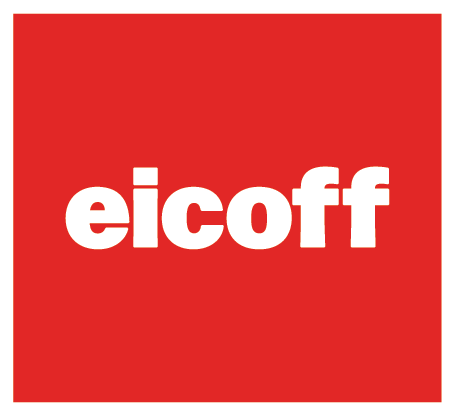Amazon Lays Out Its Next $50 Billion Opportunity In Advertising
Author: James Hercher Source: AdExchanger
Image source: AdExchanger
Amazon Ads is not only officially on the map; it is actively recreating the map of media, entertainment and advertising.
That was the verdict this week at the Amazon Ads conference in Austin, Texas.
Throughout the conference, Amazon flexed its muscles as a studio entertainment giant – something neither Google nor Meta could boast – and as a native element of the enterprise cloud infrastructure. In its sales pitches, hands-on-keyboard sessions and during conversations with ad tech vendors and Amazon sellers, Amazon consistently combined its content fortress with AWS and its investments in AI and machine learning.
Back to basics
Before getting into Amazon’s strengths, it’s important to say the ad business still has room for basic upgrades.
“We have heard feedback over the past couple of years that, historically, the DSP has not been the easiest to use,” Kelly MacLean, VP of Amazon Ads, told AdExchanger.
This is an understatement. But it’s also an opportunity.
“Amazon still has so much runway ahead of it just from improving the platform UI,” said one ad tech exec in attendance.
Three separate Amazon ad buyers also complained of painfully slow wait times for using Amazon Marketing Cloud (AMC), which is a data clean room built by Amazon Ads atop AWS.
But Amazon can only do so much about that, said one Amazon agency buyer. Ad tech and agency buyers aren’t accustomed to the wait times within the platform to, say, create an audience, which data scientists might accept as normal if they’re using SQL to query very large data sets.
One of the major changes AMC announced this week is SQL-free – or what Amazon calls SQL-lite coding – so non-natives to cloud engineering can provide a natural language prompt, such as “a lookalike audience based on my top 30% of customers on Amazon,” and the SQL is taken care of primarily by the platform.
The AMC theater
Speaking of AMC, the product is a major part of Amazon’s strategy moving forward.
On the one hand, AMC only reports data on relatively large groups. No user-level data gets out. So it’s not like third-party open programmatic tech.
But many of the niftiest things an advertiser can do in terms of targeting or retargeting granular audiences based on Amazon sales data are exclusive to AMC.
For instance, Amazon Audiences, its prospecting tool for Amazon sellers as well as SMBs that aren’t on Amazon, expanded from DSP display ads to sponsored product listings, per another unboxed announcement. And brands that sell in stores covet an AMC data stream that attributes which retail customers weren’t tagged by an online ad.
Also, AMC has only allowed the Amazon DSP as an activation channel. Two Amazon advertiser sources said their account reps told them during the conference that integrations are coming for other DSPs, but those won’t have the same granular querying capability as the Amazon DSP.
Performance Ma … Plus
Earlier this year, Amazon debuted Performance Plus, its machine-learning-based ad product that is the analogue to Google’s Performance Max.
The advertiser inputs their budget, customer acquisition costs and important KPIs, and Amazon pretty much takes it from there.
“Everyone and their mother created their own version of PMax,” according to one brand advertiser who requested anonymity to discuss products in beta testing.
But Pinterest, Snapchat, TikTok, Criteo and others are piggybacking on PMax, as part of a trend of advertisers moving from hands-on-keyboard campaigns to relying on the platform algorithm, she said. Even Meta’s version, Advantage+ Shopping Campaigns, are a pale reflection of Google.
That’s because Google spans so many different media and access points in people’s lives: Gmail, Maps, Search, YouTube, YouTube TV and the web. Facebook, Instagram and WhatsApp have huge engagement rates and user reach, but they are still similar canvases for advertisers.
Amazon and Performance Plus bring the same breadth of media, spanning Amazon Echo, Kindle, Fire TV, Prime Video, Twitch, the Amazon site and app, Freevee, IMDb, Whole Foods and more.
“If Microsoft decided to really bring together everything it has (think Xbox, LinkedIn, Teams, Outlook and Bing), it could have that, too,” said the same marketer. “But it’s hard to see anyone else’s ‘PMax’ having that kind of spread.”
As MacLean put it, “the coverage we have [with Performance Plus] is very exciting and pretty impressive.”
Another advantage, said the marketer, is that Performance Plus has controls to flip on or off the Amazon channels they prefer to target or avoid, and Amazon still reports each impression served, while Google does not.
Performance Plus is also part of the overall effort to simplify the Amazon Ads user experience.
Another announcement this week, MacLean said, is that Performance Plus campaigns can now be set up in four easy clicks.
“We want marketers to still feel like they have some control and transparency,” she said, “compared to feeling like they’re fully in a black box.”


